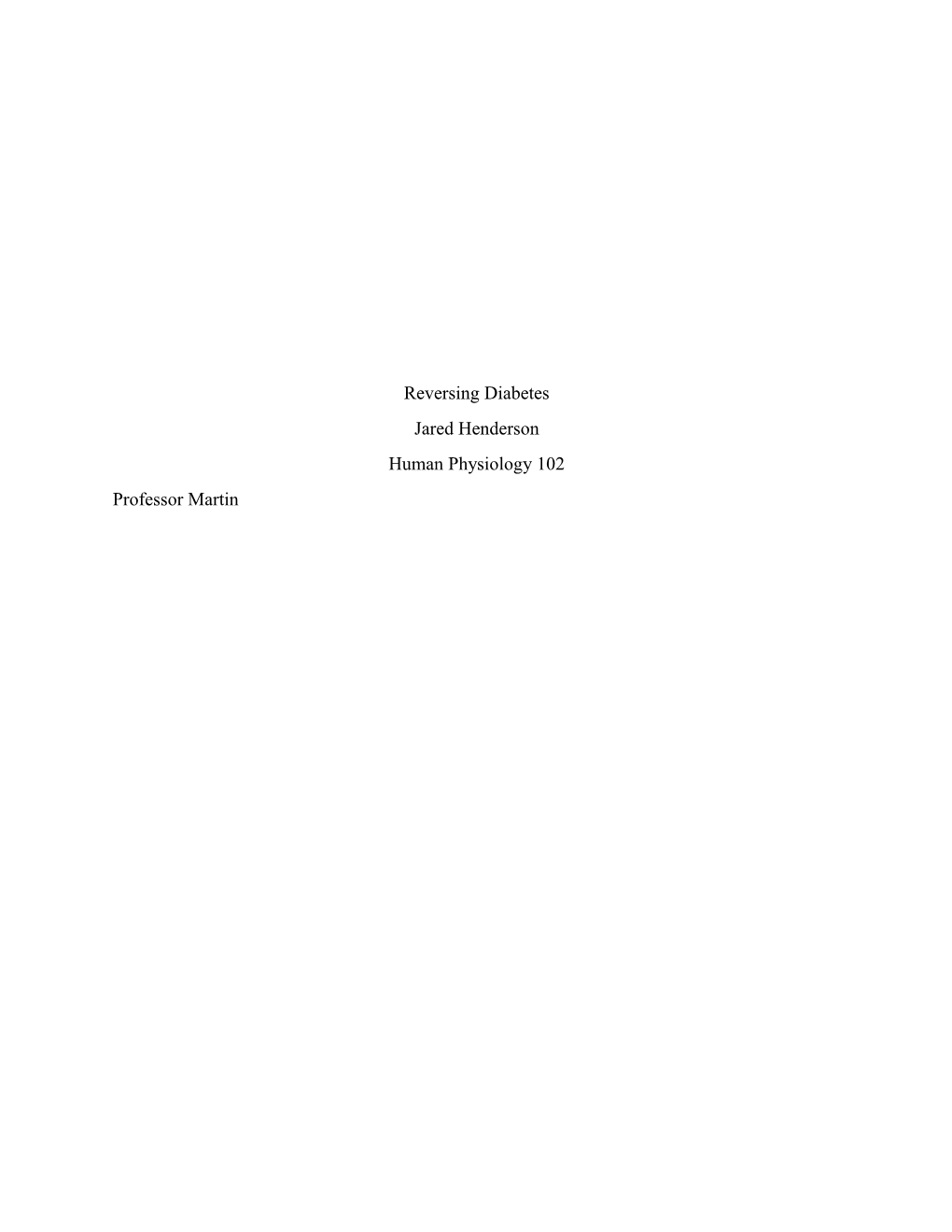Reversing Diabetes 1
Reversing Diabetes
Jared Henderson
Human Physiology 102
Professor Martin
Reversing Diabetes 1
Diabetes either directly or indirectly affects nearly everyone in America.
Diabetes mellitus is a chronic disease that causes serious health complications including renal (kidney) failure, heart disease, stroke, and blindness…. Approximately 30 percent of adults older than 60 have been diagnosed with diabetes, and its prevalence is the same in men and women…. The standard American diet (SAD) causes susceptible individuals to develop diabetes. (Fuhrman 2013).
Diabetes is a problem in today’s society, but research is now proving that type 2 diabetes can be reversed or “cured” through lifestyle changes.
The primary reason an individual develops diabetes is the lack of nutrient-rich foods readily available in the standard American diet. Americans tend to value immediate gratification. This is evident in all aspects of American culture. Microwaves cook food faster than ovens. Text messages make conversations faster than phone calls. Even news articles are now condensed and filled with photographs to keep readers interested long enough to determine the main point of an article. If something requires too many steps, the majority of Americans will avoid it. This includes food. As a result, the American diet consists mainly of foods that can be eaten immediately or heated up in a microwave. These foods are filled with chemical preservatives and lack the nutrients of natural foods.
The obvious solution would be to eat more nutrient-dense foods. However, multiple studies show certain types of foods are more harmful than others and should be avoided altogether. Carbohydrates, for example, are often touted as being bad for people with diabetes because carbohydrates turn into glucose and enter the bloodstream. Since the bodies of diabetic individuals are unable to break down high levels of glucose in the bloodstream (due to a lack of insulin or insulin that doesn’t work properly), researchers think the best solution is to restrict carbohydrates. However, not all carbohydrates are the same. Healthy carbohydrates, such as whole grain, contain copious amounts of highly beneficial fiber. Fiber has been proven to slow down insulin resistance as well as a host of other diseases and health complications (Whitaker 1987).
Another strategy for “curing” diabetes is to add exercise. Americans have grown sedentary. Most jobs require an individual to sit at a desk for hours at a time. However, muscles burn the majority of the insulin-mediated glucose that the body has consumed (Flippin 2014). Muscles will, therefore, lose insulin sensitivity caused by added fat and inflammation. The body needs daily aerobic exercise and a few strength training sessions per week to help the body metabolize more efficiently.
Diabetes can be reversed. The standard American diet and lifestyle are largely to blame for the prevalence of diabetes in modern society. However, through simple lifestyle changes like moving more, eating more nutrient-dense foods, and consuming less processed food, individuals can reduce insulin dependency.
References
Flippin, R. 2014. The diabetes reset. New York (NY): Workman Publishing Company 326 p.
Fuhrman, J. 2013. The end of diabetes. New York (NY): HarperCollins 314 p.
Whitaker, J. 1987. Reversing diabetes. New York (NY): Hachette Book Group 512 p.
